|
|
|
I've been reading for a long time about Upgrading to 'E' Headlamps with Glass lenses and the Higher Wattage H4 bulbs. This is obviously a nice upgrade if you want to spend the Coin. Along with that upgrade there is what is affectionately known as the Daniel Stern Headlamp Relay upgrade.
Several weeks ago I made my own version of this Relay upgrade. In fact I expanded on it a bit and used one relay per side per Filament instead of sharing.
Yesterday I assembled only one side so I can do a comparison.
I think the whole thing was a Bust. In the daylight, with the headlights on, I walk out 60 feet in front of the car and look back. Both Drivers side and passenger side look identical. After sun down I do the same thing. I cannot tell the difference. Sitting in the car and looking out, no difference.
Has anyone done this relay upgrade to their OEM headlights and can honestly say 'Glad I did it'?
I picked up the 12V right at the 12V terminal Block on the Drivers side fender with 10 awg wire. Grounded to a screw that other Wires are grounded to with same gauge wire. I used the relays on the Drivers side so even the wire length was very short to the Battery Terminal. Can't get any closer to the battery then that. So I consider this upgrade a failure. I do have some nice printed circuit boards with a pair of 40amp Relays on them that will be good for something in the future.
--
'75 Jeep CJ5 345Hp ChevyPwrd, two motorcycles, '85 Pickup: The '89 Volvo is the newest vehicle I own. it wasn't Volvos safety , it was Longevity that sold me http://home.lyse.net/brox/TonyPage4.html
|
|
-
|
|
|
Very interesting read.
I've probably driven more miles behind proper eCode lenses than I have with US spec plastic lamps.
When I bought my 240, I drove it for a year before I made the switch. I stayed away from the DJAuto lamps, since they were expensive and weren't available from FCP. I learned a little German, and hunted ebay.de before I settled on this set:
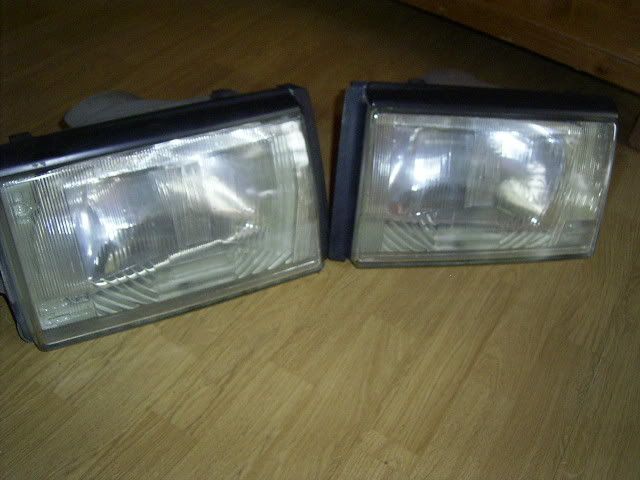
These were OEM, in excellent condition, and I had no issues with fitment or quality. I've never owned a set of DJAuto lamps, but can't imagine they'd be that much poorer, and considering I paid approx. $350 shipped to Canada, FCP is likely a good deal. I also took the opportunity, since the side corner lights were cracked, to purchase new all clear lenses.
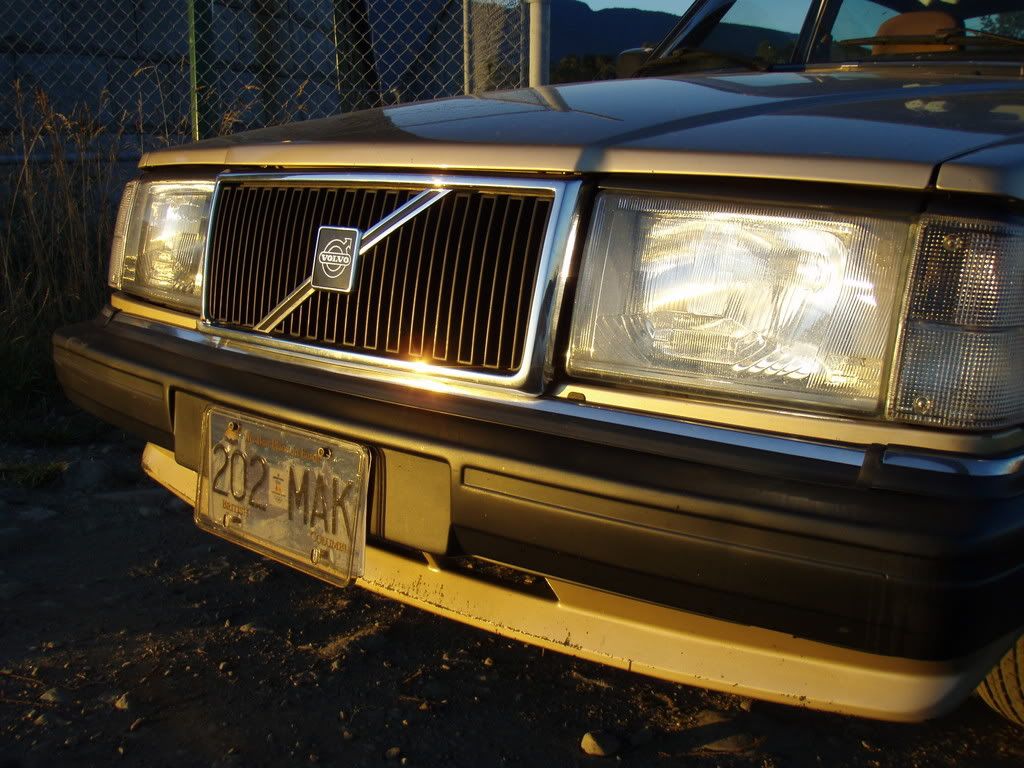
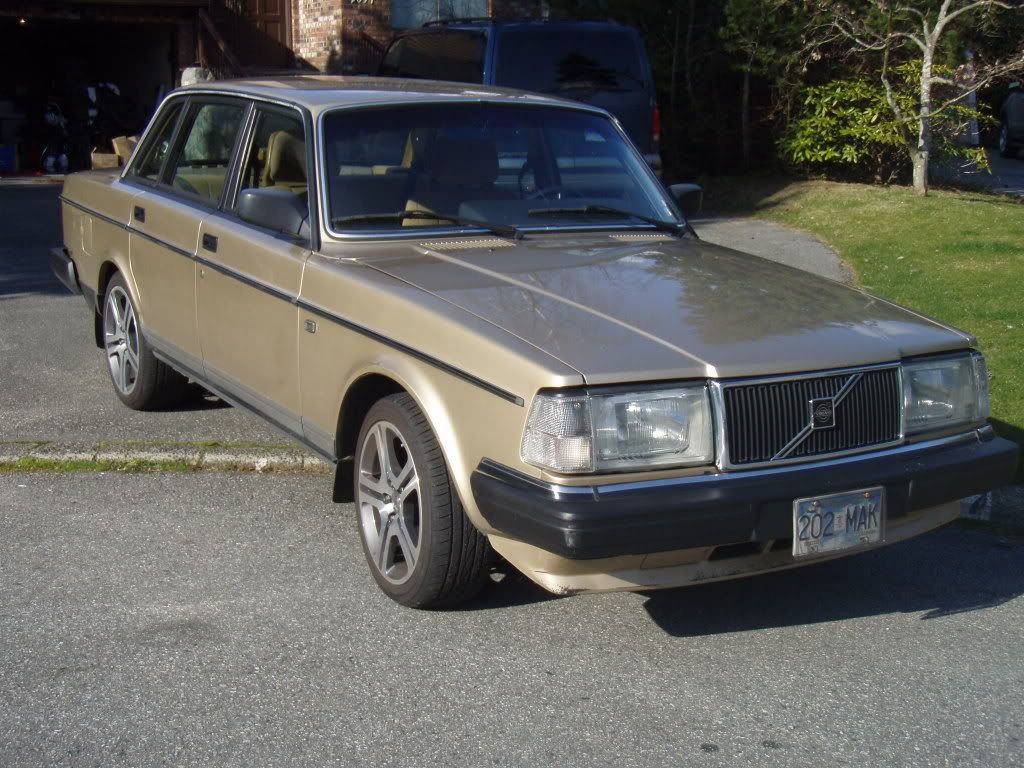
The car looked excellent!
Anyway, it also was a day and night difference. I also learned a little when I installed them, and I also used a relay kit from Daniel Stern as from the beginning I planned to run overwattage bulbs. Overwattage bulbs will compensate a little for voltage variations, and I was very pleased with my choice of 100wH/90wL H4s.
Here are some photos from the install in the 240:
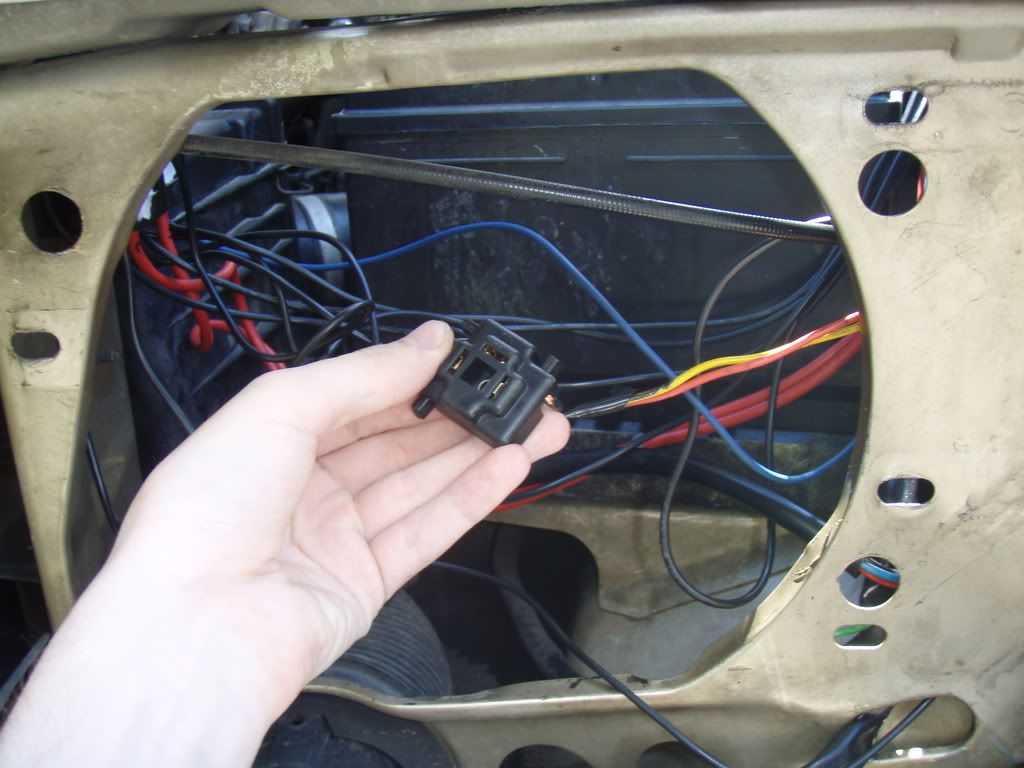
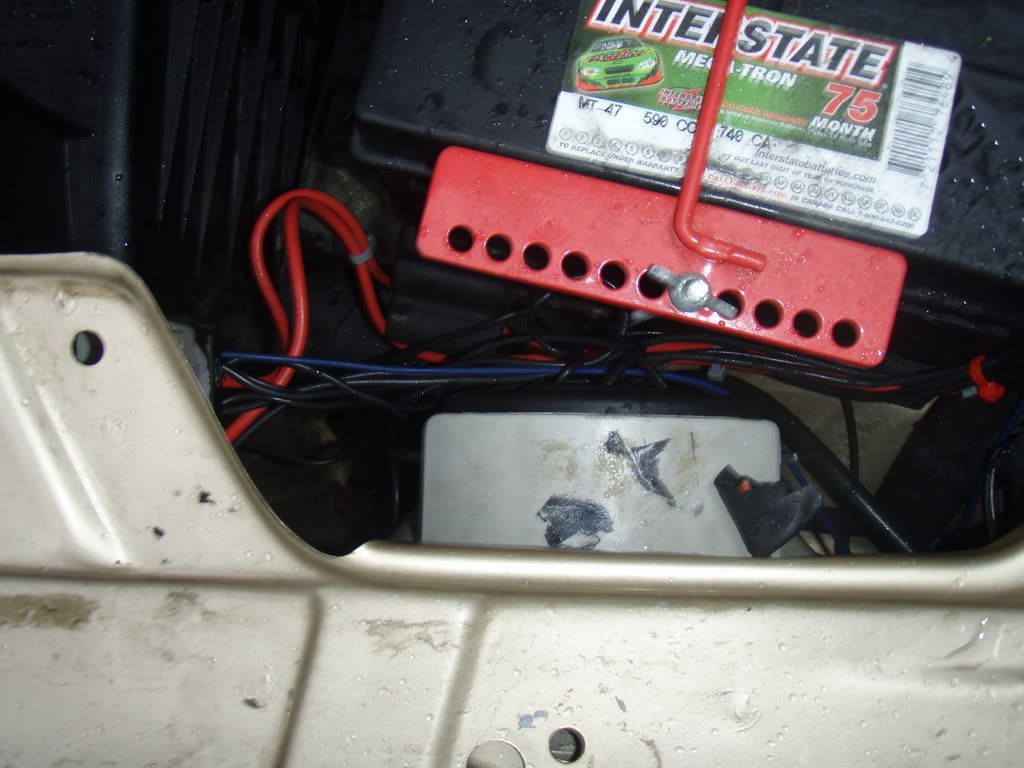
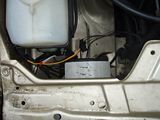
As you can see, it's VERY tight near the battery. I have small hands and changing a bulb was so challenging I gave up and pulled the headlight. I would've pulled the battery instead, but I had the headlight socket on hand, and not he battery terminal, and I didn't want to go back inside and get it. lol.
I also had a problem. Spend the money and go for a marine fuse holder. I had problems with wet fuses and often had to open the fuse holder, blow it out, dry the fuse, and put it back in. I realized this was because I had hooked my fuse up near the switching box in the front left of the engine bay - These relays are actually on a metal bracket that spaces them out maybe a half inch. The fuse holder was almost as if it were made to slot between them and the fender. THIS WAS A MISTAKE. the reason those are spaced out like that is because water comes down through that area off the fender/hood. So don't put it right there!
I also ran it in such a way that I still had all the stock wiring attached. This was useful when I sold the car as I just unhooked the old lamps, cut the wiring to the switch at the firewall, and removed the ground wire. It was out in ten minutes and the old headlamps were plugged right back in. I never had any problems with bulb failure lamps or anything like that.
I was so pleased that after I sold the car, I found a set of excellent eCodes for the 940 while I searched for the right car. When I found a 940 estate in Oregon I liked, it came with the euro lamps already, and I sold my spare DJ Auto I had already purchased. Interestingly enough, my 940 was all OEM Volvo/Bosch except for the lenses, so I had a friend in Italy send me some excellent used Volvo OEM glass. Again, can't speak on fitment differences, but here's something you might find interesting... The glass is different. OEM 940 euro spec glass on the right, DJ auto reproduction on the left:
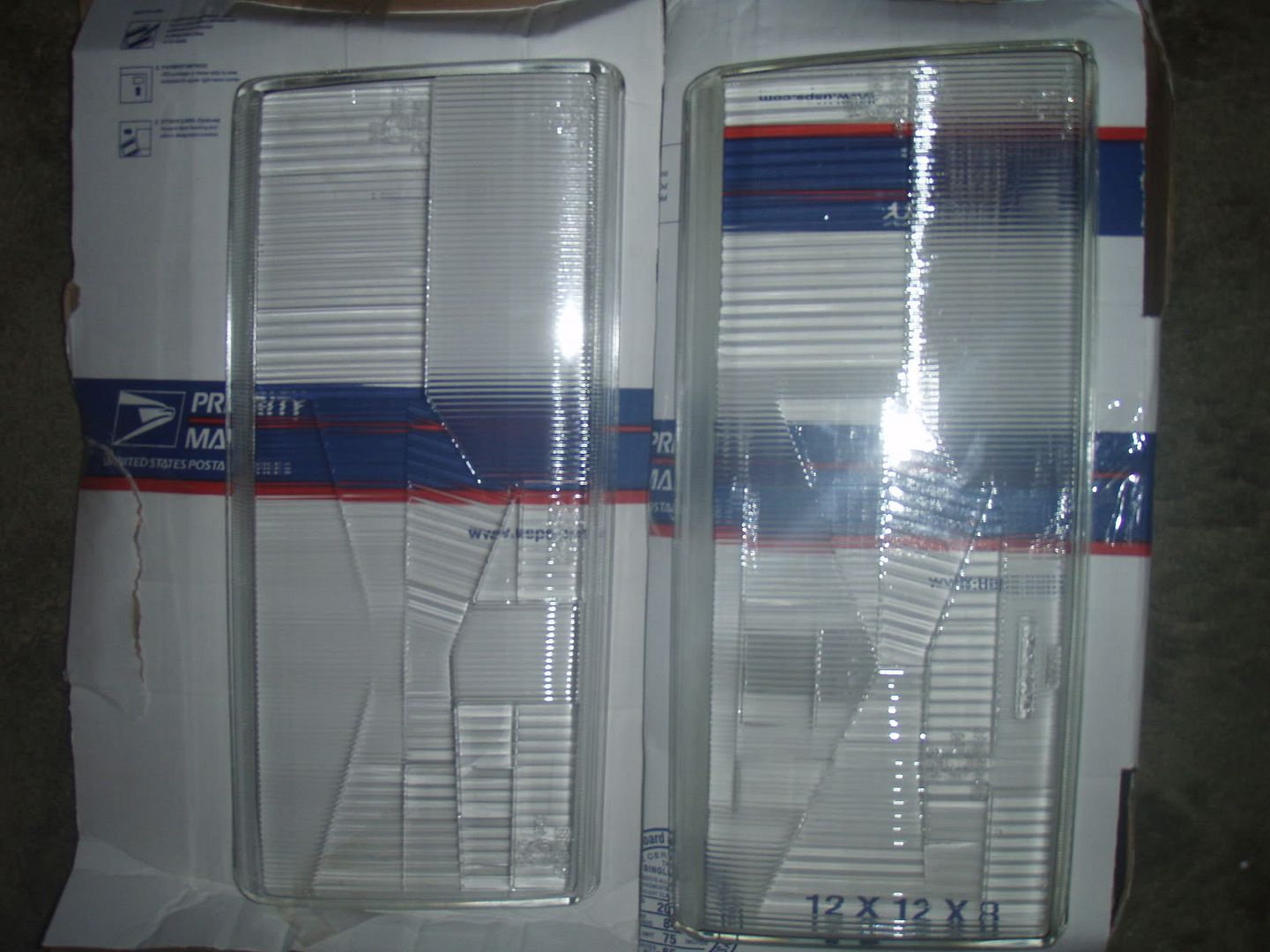
Reproduction:
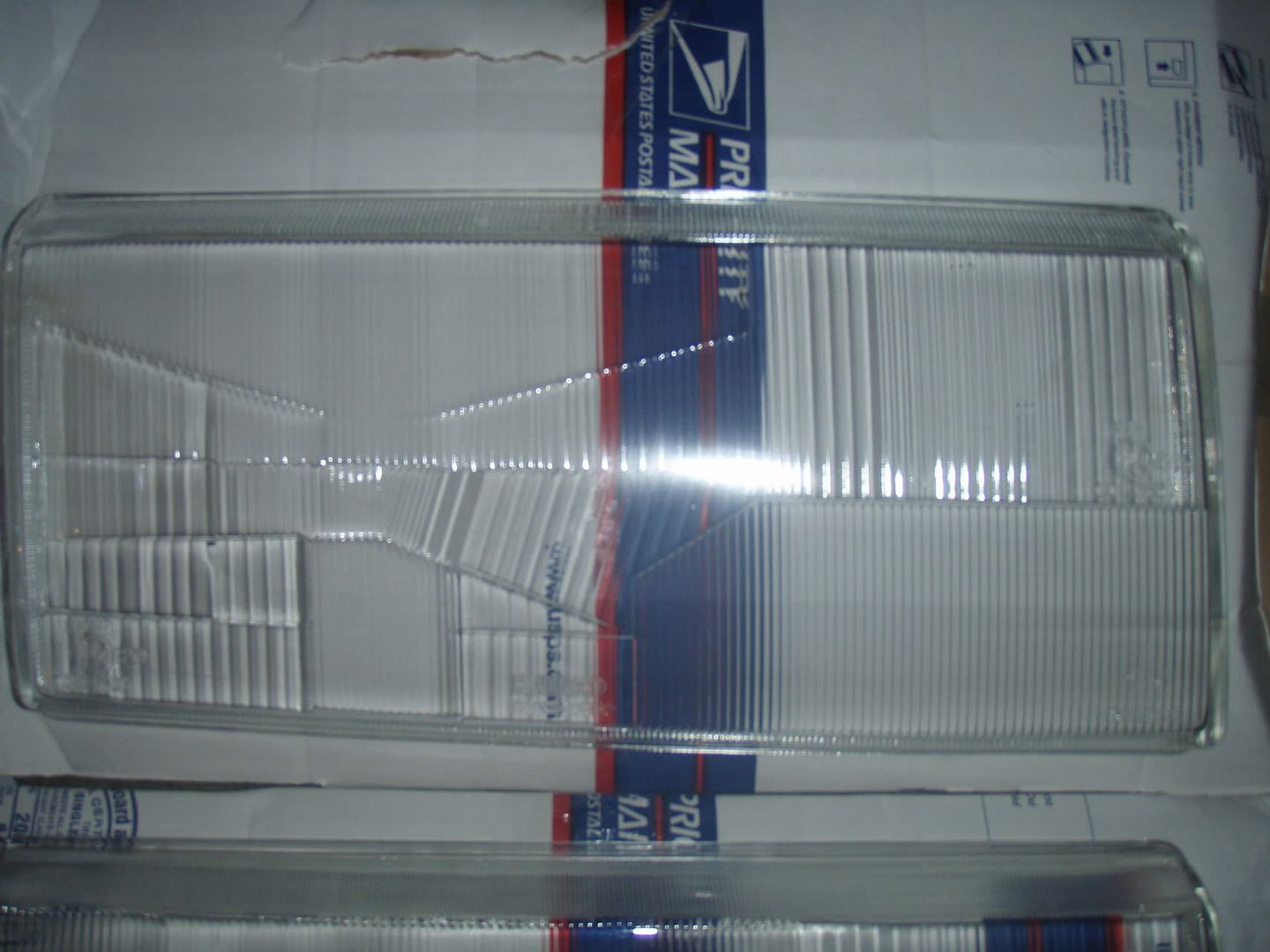
OEM:
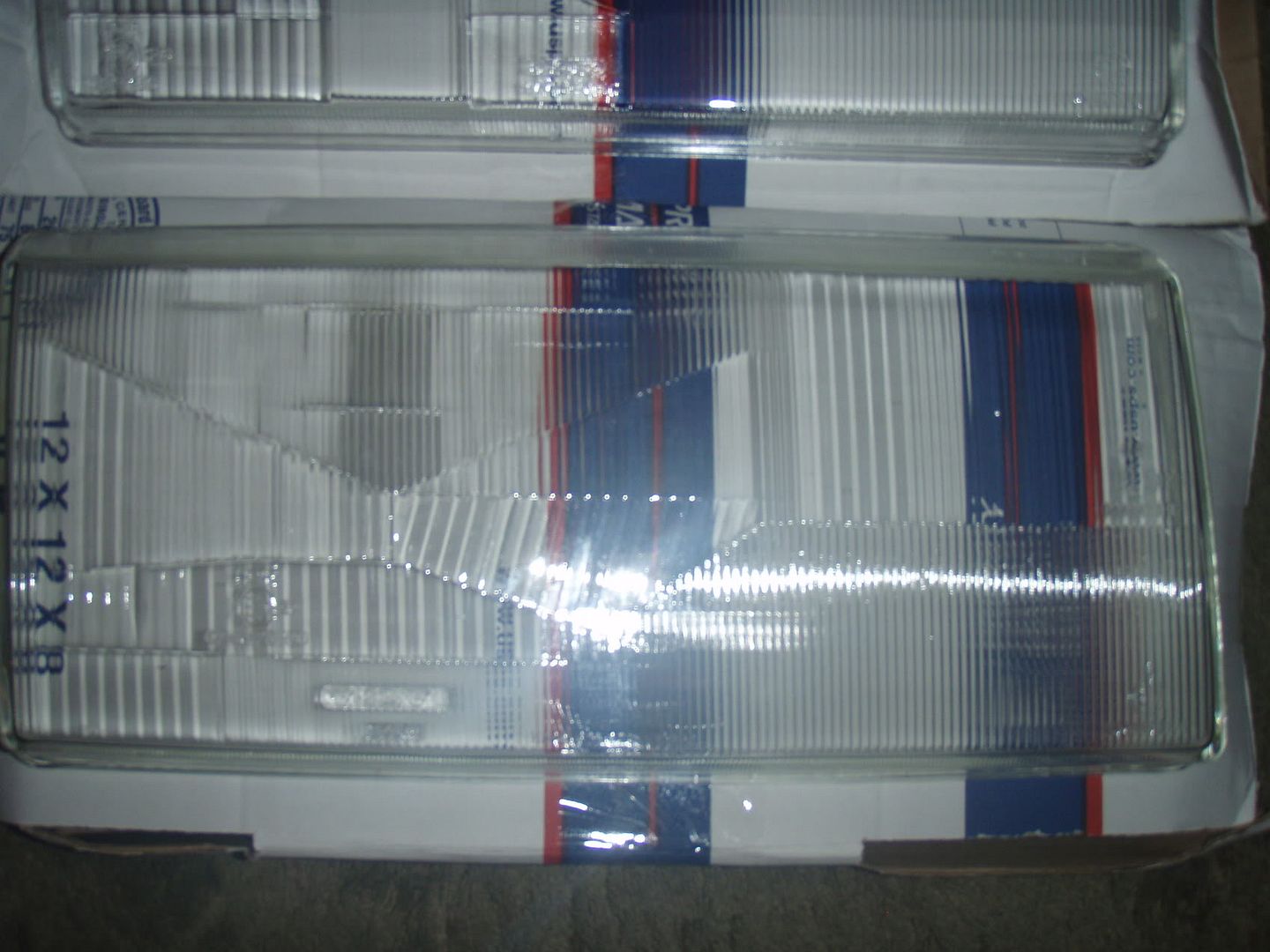
Reproduction:
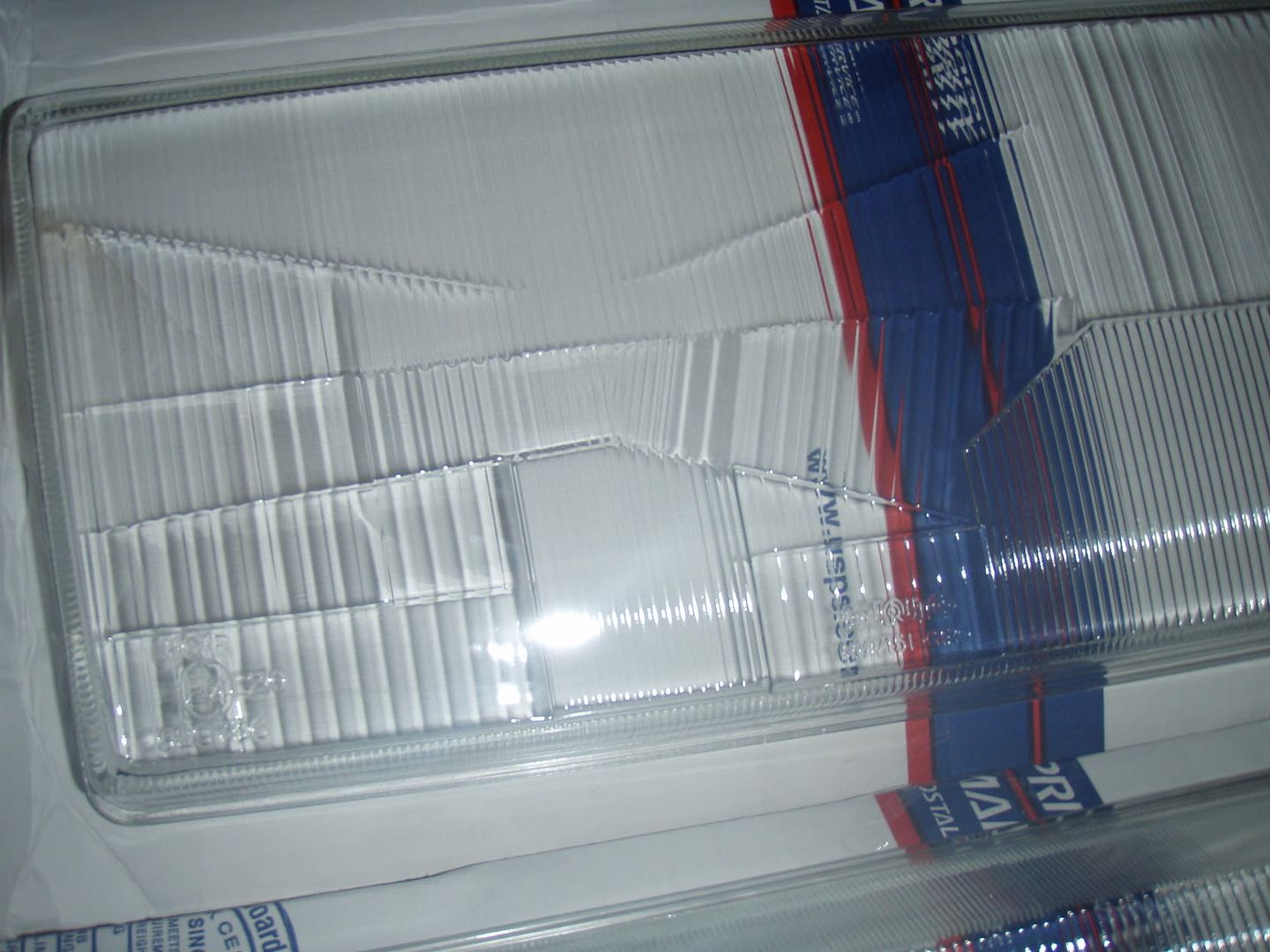
OEM:
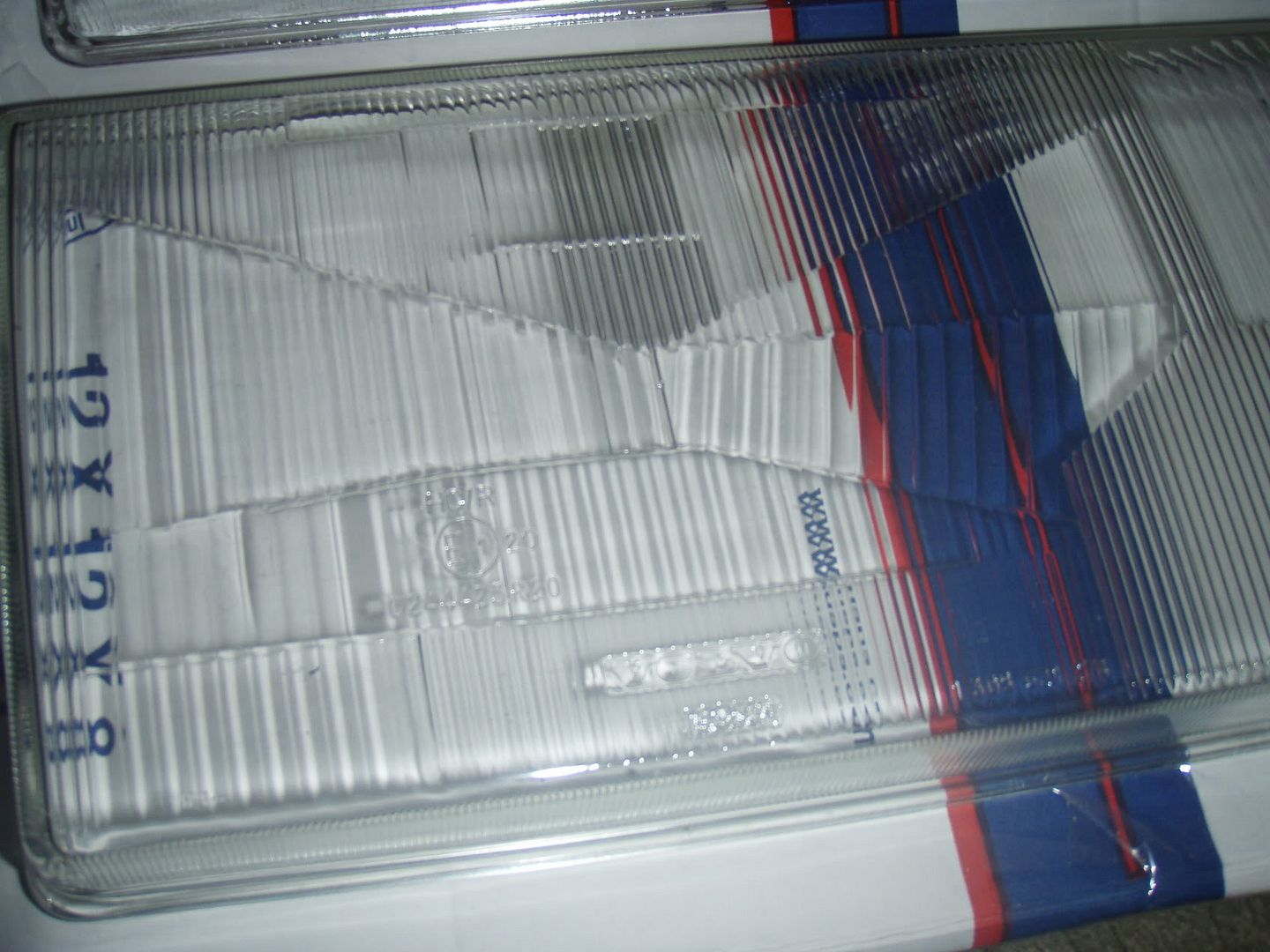
The big difference is the fluting in the glass at the top of the Volvo marked glass, and I'm not sure why or if it matters...
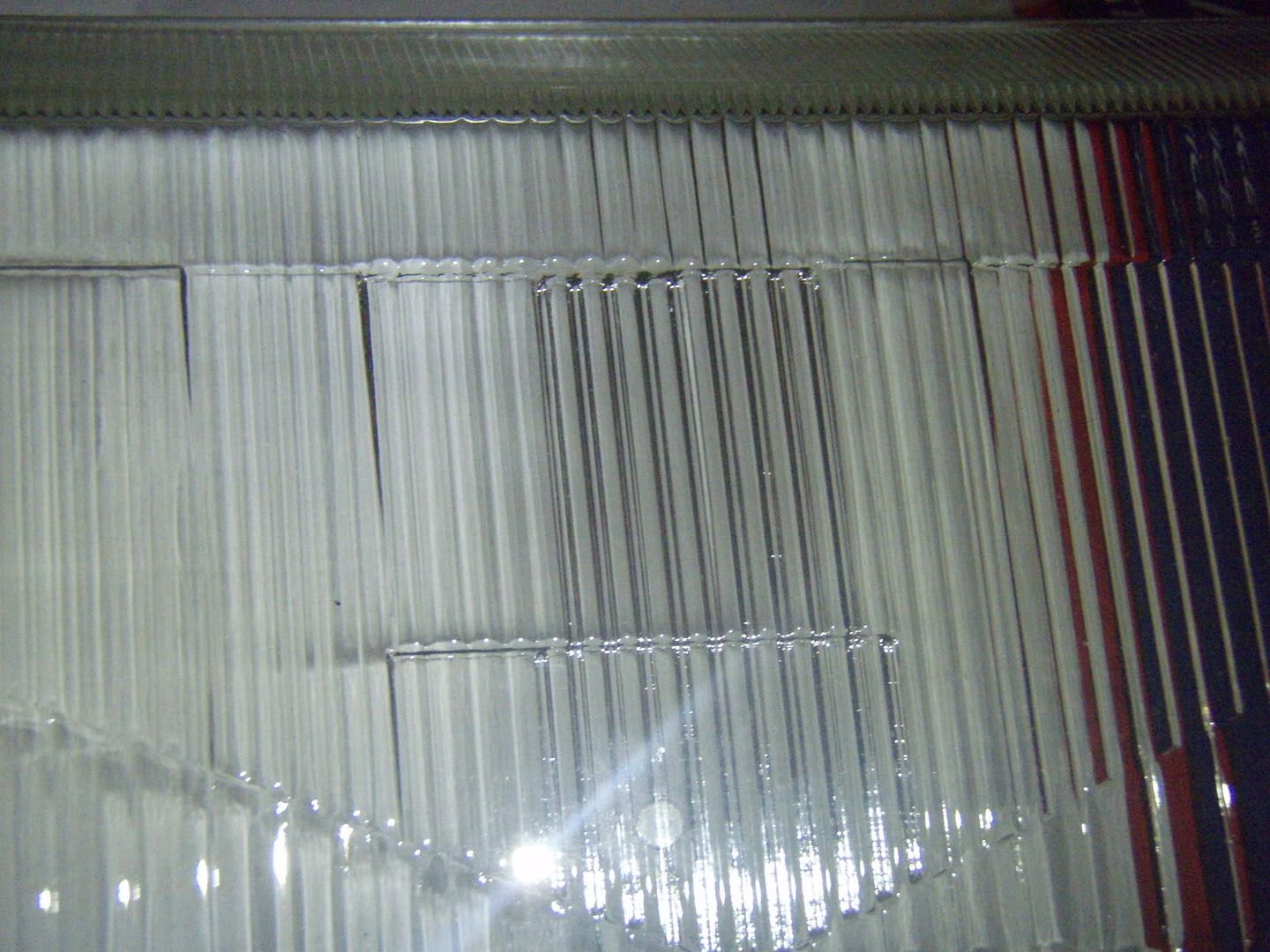
Here's the 940 with the euro lamps:
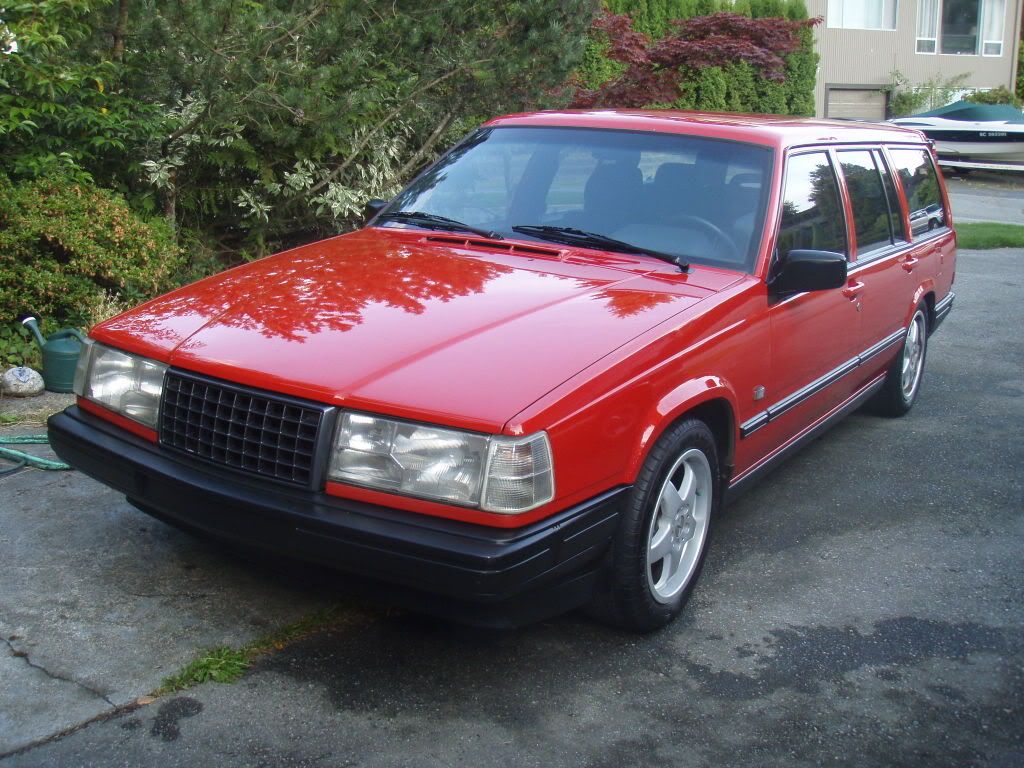
And here's the beam. Keep in mind this is with OEM housings and reflectors and JUST DJ Auto glass. not oem glass.
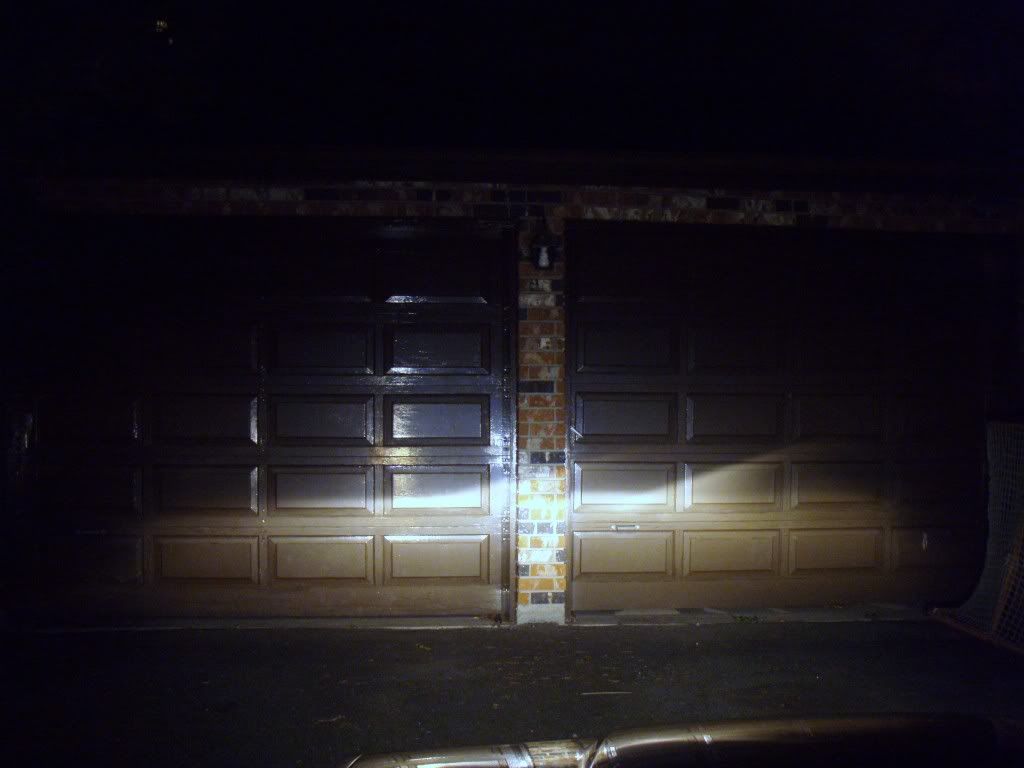
As you can see, the cutoff is far far sharper. This is of course low beam, and the 240 is similar in cutoff. It's worthwhile because you're throwing more light down the road.
The 940 also has the E-Code lamps and relays as well. It also has an extra set of relays for the fogs, as well as the fact it's got dual high beam lamps.
I was fairly happy with the light output but when one finally popped off (it was six years old) I replaced both H4's with a set of 130wH/100wL lights. This combined with the inner highbeams on the top really do make it incredible. I made the mistake of walking uphill towards the car with all highs on and it was like walking into the sun. :P In fact I came around a corner and had a cop in a parked car late one night turn on his emergency lights quickly because he was being badly dazzled. Obviously, it's not for use in the city on high. But I've never had a real problem with being flashed with the higher wattage bulbs on low. the few times I have been and flashed back it's been attributed to being on a hill, and most drivers when they get the sunspots from the highs probably regret flashing me.
FWIW, here's the 940 with low beams on and one fog burnt out.
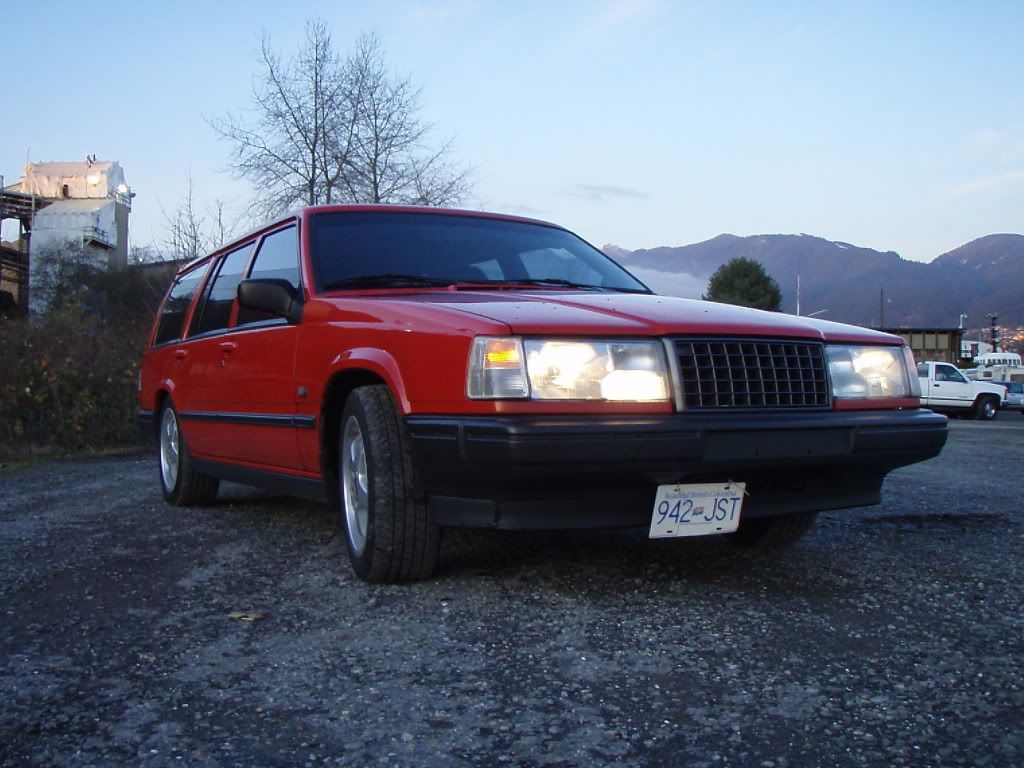
The additional highbeams, which many people with aftermarket lamps don't connect, are at the top above the lower portion integrated fogs. I really appreciate having them, and am very tempted to put an even higher wattage bulb there so they can double as driving lights... 160w should be okay, I think. Again, not using it in urban areas unless it's extremely late in suburbia.
Finally, for reference this is an up close shot of my Euro-spec 245 from Germany, as originally fitted:
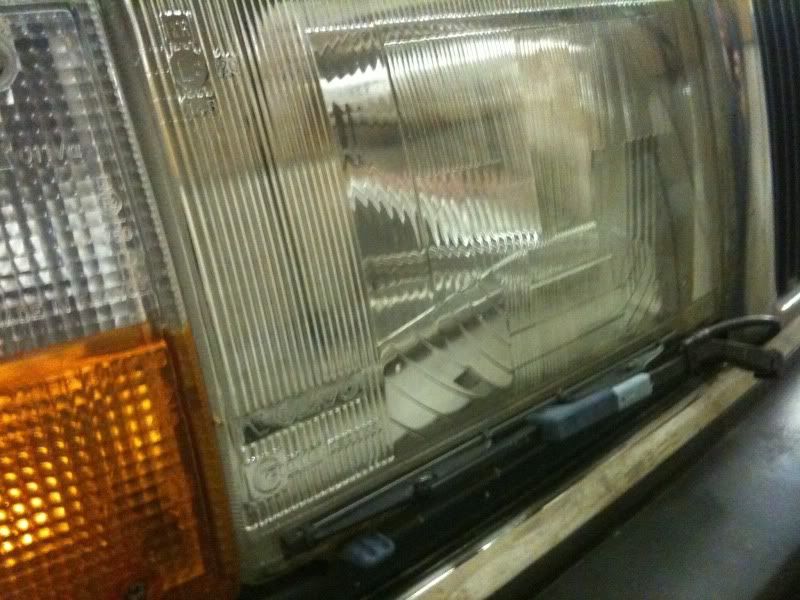
Frankly, once you go e-spec, you'll never go back. The plastic lamps are complete and utter garbage, and regardless of the relay kit's claims and actual performance, if you want to run a higher wattage bulb and not melt down the interior switch, this is the way to do it.
Again, I left the original headlamp connectors on the 240 unmodified since I knew I'd be selling it some day, and was glad I did. Running a single wire to the interior switch, and utilizing the connector in the silver box on the front left inside fender area and letting that switching box do the high/low switch work was a great decision, just watch your fuse placement. Finally, as said on Daniel Stern's site, careful thought and thoughtful care is required. I had both bulbs blow at idle on the 240 because I accidentally wired it incorrectly and it caused a voltage spike. Getting shattered glass out of those lenses is a PITA, and driving down a mountain road at 1am @ ~20km/h with just parking lights and the light of the full moon was a uhm... 'an experience'
|
|
-
|
|
|
Hi Tony,
Last year I replaced the entire headlight assembly including the yellowed lenses on my 93 244 now with 297K miles. I used the DJ Auto units from FCP. Although your title covers the headlamp relay mod, for the purposes of this discusssion, I had to include the DJ headlamp change as well.
FYI, I was not impressed with their construction, except I suppose they are worth the $250 or so. I ran my power directly off the alternator, with fuses and separate relays for high and low beams but not separate relays for each headlamp. I believe there's a long thread concerning my installation and questions that is archived.
Finally my wife brought the light-meter home from work and the info below reflects the readings I obtained. Although there were lots of eccentricities in my study, I suppose it's still not difficult to conclude that the DJ's are putting out a lot more light. I wouldn't consider this a particularly scientific study, but nonetheless some more food for thought. At the time of my testing, my voltmeter (with the lights on) read 12.7v. Both cars were tested at idle. Obviously, I'd have to take a slew of additional readings at different distances and positions to better compare the light distribution, but.................
Light Meter Readings – 10-08-10 at 2’+/- & 20’+/- Readings in footcandles
93 Green Wagon stock lights not much yellowing
2’ LBR 440 LBL 450
20’ LBR 26 LBL 24
2’ HBR 1007 HBL 910
20’ HBR 36 HBL 39
53 @ roughly CL
93 Red Sedan 1 yr old DJ Auto lamps
2’ LBR 2400 LBL 2500
20’ LBR 57 LBL 52
2’ HBR 1950 HBL 2100
20’ only CL measurement = 172
LBR – low beam right
LBL – low beam left
HBR – high…….
|
|
-
|
|
|
I've done the conversion: Euroheadlights (Cibie/Volvo) with higher wattage bulbs, Dan Stern's H4 high-temp sockets, but with my own wiring, fuses and relays wired directly to the battery; and like you, I installed inidividual relays on each side for each filament (4 relays).

I never did a right-left comparison test, though, but I'm happy with my results.
However, there's a very good additional reason if you have a later-model year 240. It appears that these last years used a new placement of a headlight relay, located inside the center console (behind the center vents) -- and the connector plug to it tends to melt from too much amperage/heat, breaking the contact and causing the headlights to fail.
Perhaps you've already noticed some posts on this forum relating to this? There have even been pictures of the burned/melted plug posted here.
By having current for the headlights through the custom wiring, only a slight amount of current (just enough to drive the relays) actually flows through that vulnerable OEM plug and relay, thus virtually eliminating this possible (and somewhat too frequent) failure of the headlight system.
|
|
-
|
|
|
I am going through with the Relays for just that reason...
Theer have been many issues over the years with the relay Socket burning. So toi take the load off of that, I will install my setup. It would have been nice to get some illumination gains.
--
'75 Jeep CJ5 345Hp ChevyPwrd, two motorcycles, '85 Pickup: The '89 Volvo is the newest vehicle I own. it wasn't Volvos safety , it was Longevity that sold me http://home.lyse.net/brox/TonyPage4.html
|
|
-
|
|
|
Sweet Crap Ken C !!
It looks like you have to be a EE (Electrical Engineer) to work up that mess of wires!
I'm trying source some Volvo/Cibie ecodes right now, and will be wanting to upgrade the wiring on my 1990 headlights also.
Thanks for all of this information. BTW, do you have any pictures of the front of your car? I'd like to see them.
--
If it needs to be maintained, repaired or replaced on a 1990 240, I've probably done it. '90 240DL, 292K looking forward to 300K badge (or sticker??). >>You haven't really worked on a car until you draw blood<< :-}
|
|
-
|
|
|
Here's my array of DRLs (as well as the Cibie/Volvo Euroheadlights).
The DRL's are all LED-based, even the parking lights (shown internally in the second picture). The Hella LED lights under the bumper (similar to those seen on Porsches, Audis, and M-Bs) are a recent addition:

This second picture is from an article in Rolling, on how to convert front and taillights to LEDs, that I wrote a few years ago (and posted a supplement to that article on this forum):

|
|
-
|
|
|
Very nice, thanks for the photos.
How much did you spend on the headlight wiring and relays, dollar wise and time wise?
--
If it needs to be maintained, repaired or replaced on a 1990 240, I've probably done it. '90 240DL, 292K looking forward to 300K badge (or sticker??). >>You haven't really worked on a car until you draw blood<< :-}
|
|
-
|
|
|
The installation was spread over a few afternoons, and the cost is hard to break down because I had a lot of the stuff on-hand -- and a lot is also somewhat more expensive because it was higher quality marine (Coast Guard-approved) components (wire, connectors, fuse holders). My one hobby that I'm more involved with than my Volvos is my boats :-). The only thing that was automotive, instead of marine, are the relays and Dan Stern's H4 sockets. But all in all, it couldn't be that much. Let's see:
Ten feet (more than enough) of 10 gauge wire (marine for corrosion resistance, or else simply automotive grade) in two different colors (to not confuse positive and negative cables -- I never use the car's ground, or a boat trailer chassis either, because of corrosion concerns). How much could that cost?
Maybe a dozen marine, crimped connectors (heat shrink wrapped, with adhesive inside for sealing) -- yes, these are a bit costly (can't remember how much, as I bought them in a pkg of 100). Also some like-styled butt connectors to attach things like the fuse holders' pigtails to the main cables, and some like-style ring connectors, too.
And the waterproof, marine fuse (spade-type) holders. Maybe six or seven dollars each (I really can't remember, though).
The two most expensive components were the automotive relays (boats' relays would be really too expensive because of their design for spark suppression); and Dan Stern's high temperature-resistant plugs for the H4 bulbs in the Euroheadlights.
I also had to fabricate a mount for the relays -- a piece of aluminum bolted on by the bolt used to hold the radiator in place (you can see it in the picture, on the side of the radiator's side support) -- this was probably the most time-consuming step.
The next most time-consuming step was simply wiring into the OEM bulb's plugs in a satisfactory (to me) way (1) to use as signals to activate my relays, and yet (2) also keep the original plugs in case I want to change the car back to DOT headlights if, for some reason, I wanted to sell the car later.
Sorry I couldn't be more specific.
|
|
-
|
|
|
Thanks for the complement (I think :-).
Yes, it does look complicated, but that's because there's more there than just headlight relays.
I've also got heavier gauge wiring and fusing for a set of four horns, for fog lights, and a module and connections to control daytime running lights.
Plus, unless you've got a late-1993 240 (the early-1993 cars don't have this), you don't know that Volvo moved a set of 4 fuses directly onto the positive terminal clamp of the battery (weird looking, isn't it).
So, yes, it all looks very busy :-), but it works, and does it well.
Regards,
|
|
-
|
|
|
If all you want is more usable light down the road, trash the DOT lights and get a set of Euros. Regardless of the amount of volts sent to the bulb, the DOT light pattern will diffuse the light and negate the brighter bulb.
Especially when visibility is poor, rain/snow/fog, the DOT lights send too much light up in the air where looking for geese at night is not your normal problem. The Euro lenses have a flat cutoff, so almost no light goes above hood height, except on the right side where it lights up traffic signs and pedestrians (and deer). The Euros also send more light farther down the road, which is where you want it when you exceed 30mph with low beams. High beams turn into daylight driving conditions :)
This is with the same bulbs and wiring you use in a stock 240.
Klaus
--
Always willing to listen, just not able to take direction.
|
|
-

|
|
How did you wire these, exactly? Terminal to relay to headlamp?
What connectors did you use to the headlamp bulbs?
What are these "printed circuits" you mention?
Did you test with the engine running?
-Ryan
|
|
-
|
|
|
I created a Printed Circuit board. And I bought Male and female connectors to mate with the Light Bulb and the Original harness.
I tested with the engine off and with it at idle. I probably should have rev'd it a bit to get the alternator putting out full. I felt at even an idle, the voltage would be better with the relay then the 11.5V I measured at the stock setup.
--
'75 Jeep CJ5 345Hp ChevyPwrd, two motorcycles, '85 Pickup: The '89 Volvo is the newest vehicle I own. it wasn't Volvos safety , it was Longevity that sold me http://home.lyse.net/brox/TonyPage4.html
|
|
-

|
|
Interesting.
What voltage did you get out of the "modified" setup?
When I get a chance (I'm buried with work/travelling for the next week or so), I'll run some tests on our 240's with a voltmeter.
-Ryan
|
|
-
|
|
|
I didn't look at the voltage... It had to be right at Battery Voltage ( 12+V) because the gauge wire I used and the fact that it was wired almost at the battery.
The idea of this relay Mod was to use the OEM headlight swith to trigger the Relay (not turn on the lights) This Relay board would then be wired with Heavy Gauge wire to the Headlights. This would eliminate the voltage loss through the run of the OEM harnessing.
This gentleman sells these kits... Arrow way down to Headlamp Relay Installation Kits http://www.danielsternlighting.com/products/products.html
--
'75 Jeep CJ5 345Hp ChevyPwrd, two motorcycles, '85 Pickup: The '89 Volvo is the newest vehicle I own. it wasn't Volvos safety , it was Longevity that sold me http://home.lyse.net/brox/TonyPage4.html
|
|
-
|
|
|
Tony a properly done relay system will result in increased voltage to the lights and a corresponding increase in light.
Here are some tests I did way back in '99 or so
http://volvo2.homestead.com/240lighting.html
My thought is possibly the loss is coming from the printed circuit board or the electronic relays.
If you connect the + lead from the relays to the terminal where the alternator joins the main wire to the starter you will get almost the full voltage the alt' puts out ~13.7 or so. Better yet attach it to the alternator.
--
Dave Shannon
Durango, CO
'67 1800s
'88-240
My Volvo Pages
|
|
-
|
|
|
Daniel Stern probably has made a good buck convincing people to install an "upgrade" which is often utterly useless. While he may not be telling any lies, he might be neglecting the rest of the story.
Since about the first time Edison threw the switch, it's been well documented that increasing the supply voltage of an incandescent lamp will increase the lighting efficacy of that lamp. Even a small increase in voltage will cause a perceivable increase in the amount of light produced by a lamp. The drawback of increasing lamp supply voltage is that it DECREASES lamp life in a very nonlinear manner.
Some facts:
1/ All things being equal, there IS less of a voltage drop on 10AWG wire than on 16AWG wire.
2/ BUT, a conductor would have to be HUNDREDS of feet longer than the lighting circuits in a Volvo 240 to make a noticeable difference between the voltage drop on the stock wiring as compared to 10AWG.
3/ A Volvo 240 ALREADY has a lighting relay in place - two of them, as a matter of fact.
Although, I have installed lighting relays in other cars in order to preserve over-tasked main lighting switches, I think that in a 240 the claims of arriving at some manner of lighting Nirvana by installing a lighting relay "upgrade" are more often the result of exercising corroded, compromised electrical connections while installing the "upgrade" than of the additional hardware put in place.
So, before you go installing an "upgrade" in a 240, go through the lighting system methodically disconnecting/connecting each terminal. If you want to do the full monte, hit the connections with a dab of DeoxIt (the only contact cleaner I've found which is worthy of the name) and a schmear of anti-oxidant grease.
These thoughts pertain to a STOCK lighting system; if you want to go to those uber wattage lamps which are illegal, but readily available, perhaps you do need some welding cable feeding the headlights.
Rich
|
|
-
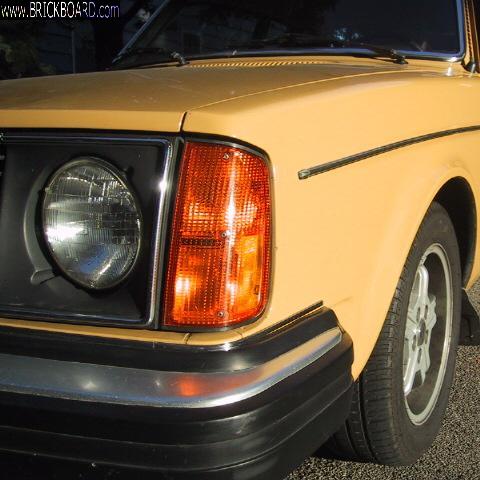
|
|
A Volvo 240 ALREADY has a lighting relay in place - two of them, as a matter of fact
If I'm not mistaken, this pertains to models 1984 and up. Prior to that there was just the step relay.
--
'80 DL 2 door, '89 DL Wagon
|
|
-

|
|
If I'm not mistaken, this pertains to models 1984 and up. Prior to that there was just the step relay.
This be true, except I think it may have been 86 and up - but those are the plastic TV-screen models that made us want e-codes and brighter headlamps. My 79 and two 83's don't seem to need any help lighting up the night.
--
Art Benstein near Baltimore
Ladies Bible Study will be held Thursday morning at 10 AM. All ladies are invited to lunch in the Fellowship Hall after the B.S. is done.
|
|
-

|
|
Hi Art,
'86 and up would be the better answer for this forum since most of the cars discussed are U.S.models.
But I do see it in the '84 and '85 diagrams with dashed lines for the wiring that tends to indicate, "certain markets." So I'm thinking that's the European setup.
--
'80 DL 2 door, '89 DL Wagon
|
|
-

|
|
Yup. Funny how the European 240 owners aren't clamoring for DOT headlights and relay mods. Gov'ts do a lot of meddling in engineering. That piece on Schwarzwald was fascinating.
|
|
-

|
|
That piece on Schwarzwald was fascinating.
It was interesting, if somewhat rambling. I'm still trying to figure out who the hell Leslie is.
--
'80 DL 2 door, '89 DL Wagon
|
|
-
|
|
|
Leslie was the male owner. I assumed, since it's a feminine name, that it was the mother. She didn't appreciate it, haha.
Sorry it was rambling. It was actually a precursor to a clean up thread about the car, and it's actually for friends on a local BMW site. There's some Volvo nerds there too and so I went through the most surprising differences between the euro spec car and an equivalent north american spec 240, like the mirror glass, lamps, etc... It's a neat car to learn from, I thought, and thought you might be interested too. You don't have to read it all if you don't want to. and if you found that rambling, I suggest you skip my experiences on eCodes that I just posted above, as it's photo intensive, has my personal experiences with eCodes on 240 and a 940, and points out differences in OEM and aftermarket glass.
FWIW, while they're not clamoring for our lamps, the big thing in the Volvo tuning circles are the North American lamps. A perfect set of 940 lamps with clear lenses and our crappy light beam are worth $400 or so in Europe. Most owners just go with the North American style single bulb corner lights. It's funny, I guess everyone wants what they can't have...
I'm tempted too to go with the single bulbs on my 945 on the corners. Make it a little more cool euro :)
|
|
-

|
|
No problem here. Ramble on. I was interested and still am.
I just saw your 'eVolvolution' post on the Opinions forum. Also a good read. Very organized, too.
And I'm glad you cleared up that Leslie thing for me.
--
'80 DL 2 door, '89 DL Wagon
|
|
-
|
|
|
Thanks. I really hope others will post their cars and details lol. That's really what I wanted to read. Same reason I read the sales reports in my Porsche magazine. :)
Yeah it was funny because the glare and the way she snubbed me, you think I'd kicked a puppy. LOL. She wasn't impressed
|
|
-

|
|
It's not just the gauge of the wiring.
Problem is that the relays already in the system aren't really doing the best job they could be doing: each separate circuit from the main step relay to the low beams goes back through the firewall and into the bulb failure relay then back through the firewall (again!) to the headlamps.
Dave Shannon's link demonstrates gaining at least a volt through doing the relay upgrade... which also has the advantage of taking the load off of the many connectors/switches in the dash. Melted connectors are not uncommon in 240's. You can rewire the headlamps easily for $20. System is easy to maintain, too. Why not?
As for increased voltage burning out bulbs rapidly, I've not seen this materialize after running E-codes for more than 5 years in two 240's.
I do agree that putting crazy wattage bulbs the stock headlamps is a bad idea.
-Ryan
--
Athens, Ohio
1987 245 DL 324k, Dog-hauler
1990 245 DL 142k M47, E-codes, GT Sways/Braces, Dracos, A-cam
1990 744GLE 189K 16-valve
1991 745 GL 304k
|
|
-

|
|
Well said, Rich, and a good contribution to the discussion.
Just have a couple points, not so much in rebuttal as to point out some differences 240 owners bear as compared to Stern's wider enthusiast audience.
(1) the alternator regulator is temperature compensated to charge the battery correctly over a wide range of battery temps. Unfortunately, the thermistor which controls it is internal and right under the exhaust manifold, so our lights are only "14 volt bright" leaving the neighborhood after just starting the motor.
(2) the plastic lenses after 20 years probably do more to send 86+ 240 owners looking for upgrades than 20-year-old corroded terminations, but you seem to be in total agreement with my general approach to these cars -- first make it play like it did showroom new before second-guessing the engineers to "upgrade." Even the remote sensing regulator suggested by (1) above, has its trade-off by compromising reliability in its installation.
(3) lamp life expectancy is an economic factor most of us will dismiss knowing our 9004 stock bulbs are being used in cars that do indeed deliver them 14 volts, without becoming a safety issue merely because of the outage frequency. We want to see the deer at the expense of shortened lamp life.
--
Art Benstein near Baltimore
Blowing out another's candle will not make yours shine brighter.
|
|
-
|
|
|
I've done a quad-relay setup for several sets of E-codes, never for stock lamps though. Thus, not all of this will apply, but the voltage readings are interesting.
The harness I create starts with 10 gauge wire to a block of two fuses. I start right at the battery hot, same place the "terminal block" is connected. (In one case I installed a larger fuse block fed by a #4 wire from the starter--but there was a killer stereo involved!) Each fuse feeds the hot supplies on two relays, which I mount to the angled edge of the core support, at the very top, near the radiator opening in the engine bay. I route the wire across the car to the passenger side in front of the radiator, along the same path that the hood release takes, inside a piece of fuel line. The OEM light feeds energize the relays (natch). I also create new grounds for the headlights and I think this makes a difference. The difference is notable in voltage even with the car off, but the big difference for me was the voltage reading with the car running at night with the radio on, cabin fan blowing and AC energized. At idle I had 13.2 volts at both sides. Raising the idle brought the voltage up to 14.something, can't recall, and it was easy to see the output of the lights increase on a dark driveway. My own car, which has E-codes, but I've never gotten around to doing the relay setup (rrrrr!) shows 12.5 volts at the lights with the same things on (100 amp alternator) but only went up to 13-ish when revved. Other things: Find a car with the single, large, rectangular headlights in the boneyards and grab some rubber booted plugs. These will seal nicely against the big rubber boots on the back of the e-codes. Check different cars. Certain years of 280z's have 14 gauge leads, most seem to be 16. On my car I found that this and creating new, clean grounds increased the voltage at the lights....until I can get around to doing the relay setup. IMHO, the light output is visible, but I have the advantage of having some rural roads nearby that are pitch black at night. Makes aiming the lights easier too.
|
|
-
|
|
|
I live in New York but way not the city. My road is dark dark at night. I thought I had a good Read on the illumination difference Which was none that I could see).
I did my evaluation with teh car at idle and not running. So I guess the voltage gain would have been 1 volts max.
Yes, the Grounds were beefed up and grounded to the Body with 10 awg. So I think I'm good there.
I too will run the Wire to the passenger side across the front by the Hood latch. Out of site is always good. I'm going to put this in anyway.. I have them, couldn't hurt. What amp fuse did you use? I should have put Fuse holders on the Circuit board. Dumb dumb dumb
I can change the Sockets to H4's if I ever go to E-codes.
--
'75 Jeep CJ5 345Hp ChevyPwrd, two motorcycles, '85 Pickup: The '89 Volvo is the newest vehicle I own. it wasn't Volvos safety , it was Longevity that sold me http://home.lyse.net/brox/TonyPage4.html
|
|
-
|
|
|
I'm pretty sure I have run these on 20 amp fuses. When I do mine, I want to try using breakers. I use 30 amp relays. First time I did the installation I must have been sleepwalking. Did the entire thing with, foremost in my mind, that the OEM circuits were the control, were fused, and did not put fuses in the power feed. It wasn't until I was double checking the wiring that a lightbulb came on in my head (no pun intended).
|
|
-
|
|
|
My question would be, did you check the brightness difference when the electrical system is loaded up? Turn on the a/c and wipers and then check it out. There might be a bigger difference then, but even so, it might be hard to see it.
--
http://www.facebook.com/album.php?aid
|
|
-

|
|
Tony, though Stern says to get the power at its source (the alternator, not battery), on a 240 Volvo I would take it where you did, given the pros and cons* of Volvo's particular wiring scheme.
But I would not trust my eyes to compare a left and right headlamp. Measuring the voltage right at the lamp terminals will tell the truth.
Remember, as Stern likes to point out, the power (brightness) varies as the square of the voltage, so little increases can make bigger differences in luminosity. Your existing wiring (all the way through the BFWS) is probably still in pretty good shape, if the improvement isn't striking.
*cons to wiring at the alternator: Need to protect wiring from vibration and large flex between moving engine part and fixed body destination. Volvo has made this transition in the high-strand-count battery cables.
pros to wiring at fender-mounted bus: Better protection for wire termination to battery and clear of acid area.
(I haven't done this mod but I have thought about it some...)
--
Art Benstein near Baltimore
Deer season for easily totaled bricks is here.
|
|
-
|
|
|
Yes, The Stud on the alternator would be the optimum place but I liked the cleanliness of tucking it up there at the terminal block.
I figured the Voltage is pretty darn good at that Terminal.
Back when I looked at the voltage I think I was seeing 11.5V at the Headlight connector.
I guess my thoughts were; If I can't see the difference going down the road, why bother? I have the boards.. I might as well just do it..I guess.
I'll e-mail you the pics of the Relay Board.
--
'75 Jeep CJ5 345Hp ChevyPwrd, two motorcycles, '85 Pickup: The '89 Volvo is the newest vehicle I own. it wasn't Volvos safety , it was Longevity that sold me http://home.lyse.net/brox/TonyPage4.html
|
|
-
|
|
|
According to Stern's website, adding relays to increase voltage at the headlight from 11.5v to 14v would DOUBLE the light output. http://www.danielsternlighting.com/tech/relays/relays.html
I can't believe you see no difference, unless the circuit boards you used are significant voltage bottlenecks.
Still, any result is valued. I was thinking about doing this to my own car (in lieu of e-codes), but I might not bother, now.
|
|
-
|
|
|
I know Sean,I read the article about doubling the output, That's why I was exited about designing these boards. The distance from Relay to connectors are extremely short and I made the Copper very thick. No voltage drop there.
I'm going to do the install permanent anyway. Doesn't hurt and it will take the strain off the dashboard switch and the original OEM relays and their wiring.
--
'75 Jeep CJ5 345Hp ChevyPwrd, two motorcycles, '85 Pickup: The '89 Volvo is the newest vehicle I own. it wasn't Volvos safety , it was Longevity that sold me http://home.lyse.net/brox/TonyPage4.html
|
|
-
|
|
|
FWIW, I have done the modification, however, it was at the same time as a swapover to ecodes following a bit of a crunchup on the front end three years ago, so all I can say is that the combination is a large improvement over the stock, plastic rectangles.
|
|
-
|
|
|
I"m tossing this in here as you mentioned the stock lights, which many seem to find inadequate especially as they age. I only had one 240 with those lights for a very brief time, but have had many 7/9 cars with plastic headlights that do a similar thing, which is have the lens become yellow and the inside get dirty.
I have also had some cars with glass headlights and a removable H4 bulb.
There is a procedure in the FAQ for cleaning these, and I cannot recommend it highly enough. Even those that seem 'ok' can benefit from removal, full interior cleaning, lens restore, and reinstall.
Briefly, it's remove assembly, remove bulb, turn bulb side up, fill halfway or so with 1/2 warm water, 1/2 alcohol, and a Tiny bit of dish detergent. Shake shake shake, rinse, let dry.
Get some scratch remover, I like this stuff, the red bottle in the middle, and rub out the outside of the lens. I do it by hand; with a buffing wheel it may go even faster.
http://www.tapplastics.com/shop/product.php?pid=113
I guarantee you will be pleased. I have done this to at least 12 lights, I forget them all, and have never failed to get to at least 90% of new.
I've found this to last a couple years or so.
I'm following this as I'm going to install e-codes in a 940T and am planning the relay and wire installs. But my regular 740s with plastic lights throw out decent light right now.
|
|
-
|
|
|
Here's the FAQ address: http://www.brickboard.com/FAQ/700-900/ElectricalLightingHorns.htm#HeadlampUnitCleaning
|
|
-
|
|
|
Well, I never thought the relay swap was going to yield more light, just take a possible electrical load off wiring and switches.
|
|
-
|
|
|
According to everything I've read, the relay mod should increase light output. Supposedly, the voltage drop from battery to headlights is enough to decrease the light output significantly, and adding relays corrects this.
I am dismayed to hear these results, Tony. Thanks for posting, though.
|
|
|
|
|






















